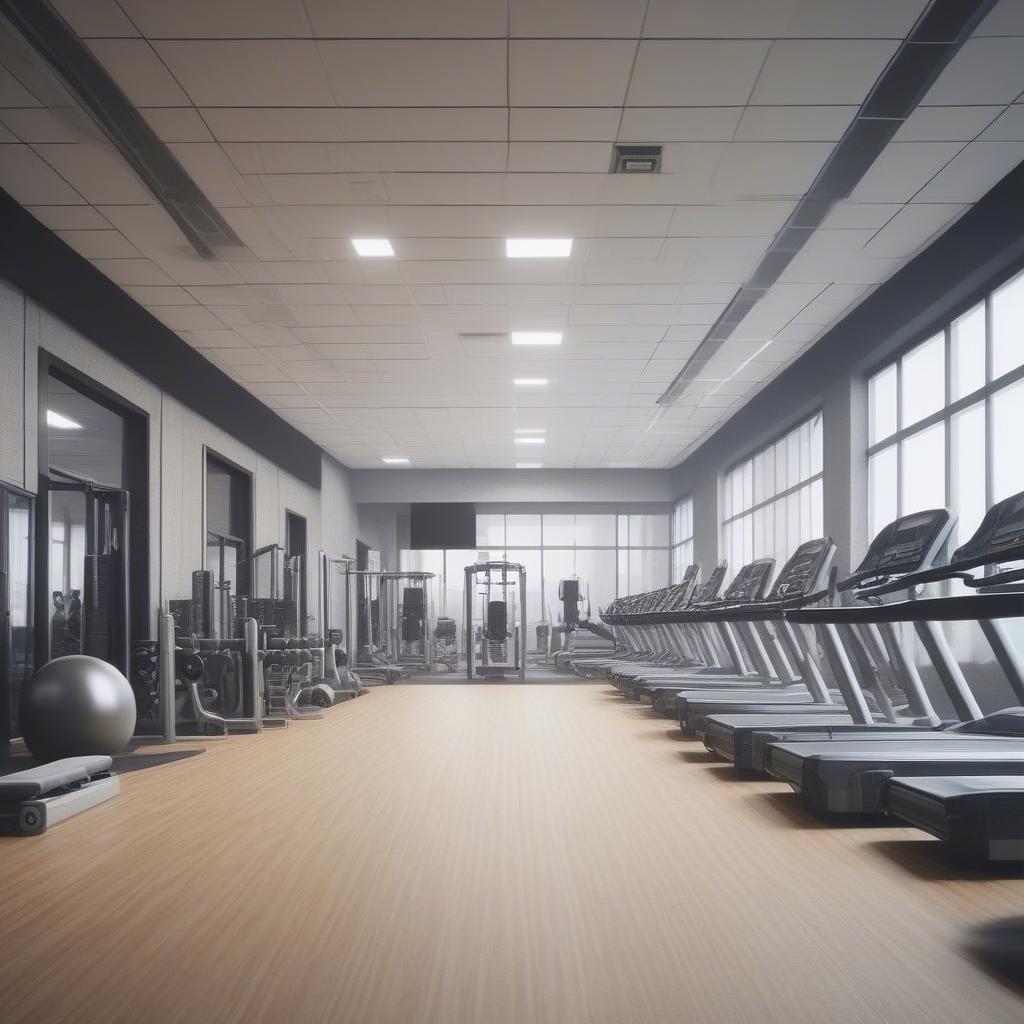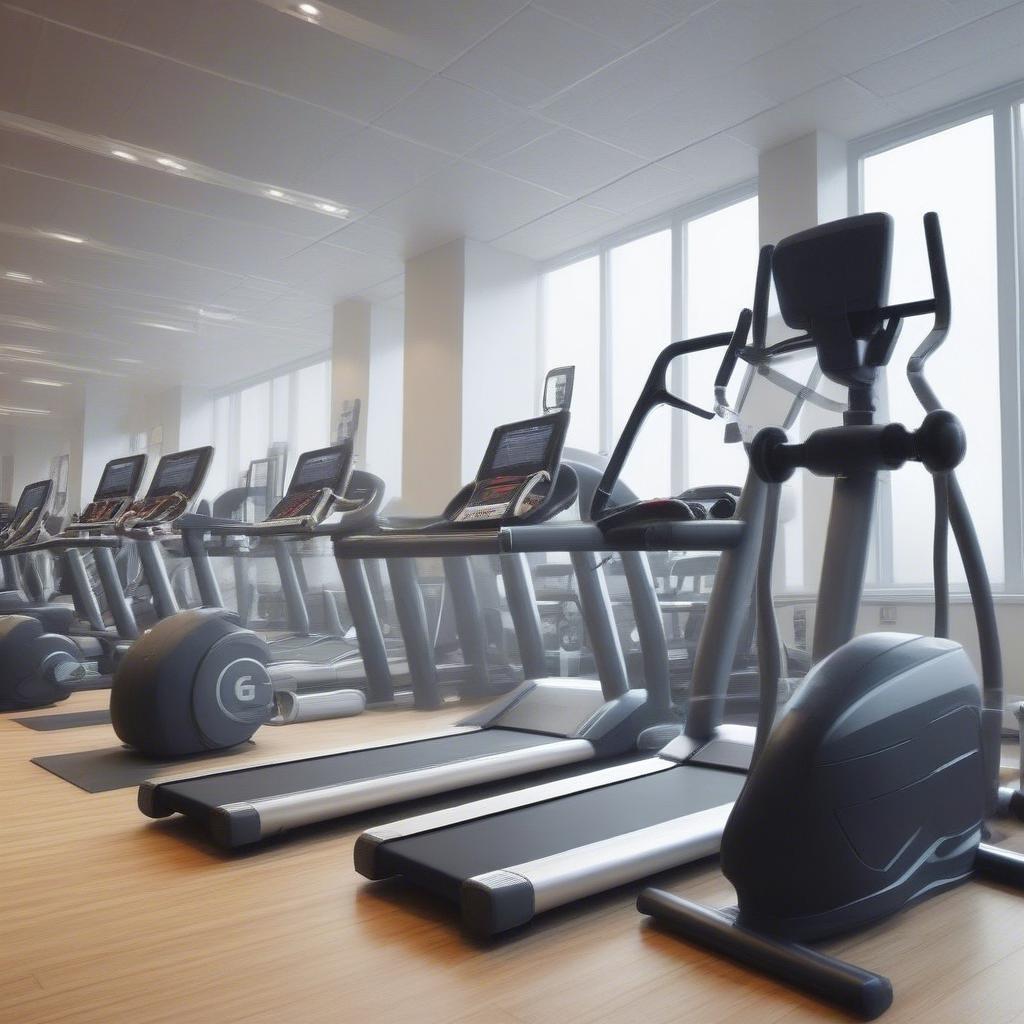
The heart pounds, the music thumps, and the weights clang – a typical scene in any bustling gym. But what happens when the rhythm breaks? When an unexpected incident throws the workout routine into chaos? That’s when well-defined gym safety protocols and fitness emergency plans become absolutely crucial. This article serves as your comprehensive guide to creating and implementing robust gym crisis response strategies, ensuring the safety and well-being of everyone in your fitness facility.
Why Are Emergency Response Protocols Essential for Gyms?
The gym environment, with its mix of strenuous activity, heavy equipment, and diverse individuals, presents a unique set of risks. Neglecting to prepare for these risks can have serious repercussions:
- Protecting Lives: The most critical reason is, of course, the preservation of life. A prompt and effective response to a cardiac arrest, severe injury, or other medical emergency can literally mean the difference between life and death.
- Minimizing Injuries: Quick action in response to a slip and fall, equipment malfunction, or a minor accident can prevent a minor incident from escalating into a serious injury.
- Reducing Legal Liability: Having a clear, documented, and practiced emergency plan significantly reduces the legal liability of the gym and its staff in the event of an incident. A lack of preparation can result in negligence claims, lawsuits, and damage to reputation.
- Maintaining a Positive Reputation: A gym’s reputation is built on the perception of safety and care. An effective crisis response plan demonstrates a commitment to member well-being, building trust and enhancing the facility’s image.
- Ensuring Business Continuity: A well-managed emergency situation will allow your gym to return to normal operations more quickly, minimizing disruption and loss of revenue.
Understanding the Potential Risks in a Gym
Before creating a plan, it’s essential to identify potential emergencies:
- Medical Emergencies:
- Cardiac Arrest: Often triggered by underlying health conditions or overexertion.
- Heart Attack: Recognizing the symptoms and acting fast is critical.
- Asthma Attacks: Common, especially during intense workouts.
- Hypoglycemia/Hyperglycemia: Related to blood sugar imbalances, especially among members with diabetes.
- Seizures: Can occur with little or no warning.
- Sprains, Strains, and Fractures: Resulting from falls or improper use of equipment.
- Lacerations/Cuts: Possible due to sharp equipment, weights, or glass.
- Dehydration/Heatstroke: Caused by overexertion in hot or humid conditions.
- Facility-Related Emergencies:
- Equipment Malfunctions: Can lead to injuries if not properly maintained.
- Fires: A serious threat, especially with electrical equipment and flammable materials.
- Power Outages: Can create a chaotic and unsafe environment.
- Floods: Caused by plumbing issues or natural disasters.
- Chemical Spills: If using cleaning chemicals or other agents.
- Security Threats:
- Theft/Vandalism: Common issues in public facilities.
- Aggressive or Unruly Members: Can create a hostile or unsafe environment.
- Active Shooter Situations: A rare, but potentially catastrophic threat that needs planning.
Building a Robust Gym Emergency Response Plan: Step-by-Step
Creating an effective fitness emergency plan involves a multi-pronged approach, incorporating several critical elements:
1. Assemble Your Emergency Response Team
- Identify Key Personnel: Designate specific staff members to lead in different types of emergencies. These roles might include:
- Emergency Response Coordinator: Oversees the entire process during a crisis.
- First Aid Responders: Trained in basic first aid, CPR, and AED use.
- Communication Lead: Responsible for informing members, staff, and emergency services.
- Evacuation Lead: Ensures a safe and orderly evacuation if necessary.
- Security Lead: Manages security threats and crowd control.
- Provide Proper Training: Ensure that all team members receive comprehensive training appropriate to their roles. This training should include:
- First Aid, CPR, and AED certification.
- Emergency communication protocols.
- Evacuation procedures.
- Conflict resolution and de-escalation techniques.
- The location and use of all emergency equipment.
- Practice drills.
- Regular Review and Updates: Your team and its knowledge must be regularly reviewed and updated to ensure everyone is up to date on new information, protocols, or equipment.
2. Develop Comprehensive Emergency Procedures
Your gym safety protocols must be detailed, clear, and readily accessible. These procedures should cover:
- Medical Emergencies:
- Recognizing Symptoms: Train staff to recognize the signs and symptoms of various medical emergencies (e.g., chest pain, shortness of breath, signs of a seizure, etc.).
- Immediate Response: The immediate steps to take, including calling for assistance (911) and providing first aid.
- Using First Aid Equipment: Know the location and proper use of first aid kits, AEDs, oxygen, and other life-saving equipment.
- Facility-Related Emergencies:
- Fire Safety: Evacuation routes, fire extinguisher locations, and procedures for sounding alarms and contacting the fire department.
- Power Outages: Backup lighting and methods for communicating with members.
- Equipment Malfunctions: How to quickly secure equipment and prevent further injury.
- Chemical Spills: Procedures for containment and cleanup.
- Security Threats:
- De-escalation Techniques: How to manage aggressive or disruptive members calmly and effectively.
- Emergency Lockdown Procedures: If dealing with an active shooter or similar threat.
- Security Incident Reporting: Clear protocols for documenting security breaches.
- Communication Protocols:
- Internal Communication: How staff will communicate during an emergency (e.g., two-way radios, cell phones).
- External Communication: How to contact emergency services (police, fire, ambulance) and inform members and their families.
- Emergency Contact Information: Ensuring you have updated contact information for all members.
3. Implement Clear Communication Strategies
Clear and timely communication is paramount during an emergency. Ensure your plan addresses:
- Emergency Alert Systems: Consider using a combination of:
- Visual Alarms: Flashing lights.
- Auditory Alarms: Sirens or announcements.
- Text Message Alerts: A mass notification system to reach members quickly.
- Staff Communication: Provide staff with reliable ways to communicate throughout the facility.
- Member Communication:
- Clear signage indicating emergency exits, first aid stations, and AED locations.
- A pre-prepared announcement script for specific emergencies.
- A visible emergency contact list for staff to utilize.
- Instructions on what members need to do in specific emergencies.
- Post-Emergency Communication:
- Providing updates on the situation.
- Sharing resources for any follow-up actions needed by members.
4. Maintain and Regularly Inspect Equipment
Ensuring all equipment is safe and operational is vital:
- Regular Maintenance Schedule:
- Implement a preventative maintenance schedule for all workout equipment.
- Conduct regular inspections of all machinery, looking for wear, tear, and damage.
- Properly maintain and store all equipment according to the manufacturer’s guidelines.
- First Aid Kit Inspection:
- Ensure first aid kits are fully stocked with all necessary supplies.
- Check expiry dates and replace expired items.
- Train staff to properly use the supplies.
- AED Checks:
- Ensure that AEDs are working correctly and are easily accessible.
- Maintain appropriate battery levels and check for any issues that could cause issues during use.
5. Practice, Evaluate, and Refine Your Plan
Having a written plan is not enough. Regularly practicing your plan is crucial to ensuring it works effectively when needed.
- Emergency Drills:
- Conduct regular drills to simulate various emergencies.
- Involve all staff members in the drills.
- Evaluate the effectiveness of the drills and identify any weaknesses in the plan.
- Post-Drill Evaluation:
- Discuss lessons learned and modify the plan accordingly.
- Use feedback from staff to improve procedures and processes.
- Continuous Improvement:
- Stay updated on best practices and new technologies.
- Periodically review and update the emergency plan to adapt to the changing needs of your facility.
Creating Actionable Templates for Your Gym
To make your gym crisis response plan as effective as possible, utilize the following templates:
Emergency Contact List Template
| Role | Name | Phone Number | Email Address |
|---|---|---|---|
| Emergency Response Coordinator | |||
| First Aid Responder 1 | |||
| First Aid Responder 2 | |||
| Communication Lead | |||
| Evacuation Lead | |||
| Security Lead |
Emergency Communication Script Template
- For Medical Emergencies:
"Attention everyone, we have a medical emergency. We need to keep the area clear while trained staff provide assistance. Please remain calm and await further instructions." - For Fire Emergencies:
"Attention everyone, there is a fire. Please evacuate the building immediately using the nearest exit. Do not re-enter until instructed by staff." - For Security Threats:
"Attention everyone, we are under a security threat. Please follow the instructions of staff immediately. Lockdown in your current space and remain quiet."
Equipment Maintenance Checklist Template
| Equipment | Last Inspection Date | Next Inspection Date | Maintenance Performed | Notes |
|---|---|---|---|---|
| Treadmill #1 | ||||
| Treadmill #2 | ||||
| Elliptical #1 | ||||
| Weight Machine #1 | ||||
| Free Weights | ||||
| First Aid Kit | Stocked List | |||
| AED | Battery Levels |
Key Benefits of a Robust Emergency Plan
The benefits of implementing a thorough fitness emergency plan extend beyond simply addressing risks:
- Increased Safety: Creates a safer environment for members and staff.
- Reduced Liability: Provides clear evidence of your commitment to safety, minimizing the risk of legal action.
- Improved Staff Confidence: Provides staff with the necessary training and procedures to handle emergencies effectively.
- Enhanced Reputation: Demonstrates a commitment to well-being, building trust and loyalty.
- Increased Member Confidence: Members will have confidence knowing that the gym is a safe space, enhancing their experience.
- Business Continuity: Minimizes disruption, helping the gym return to normal operations quickly after an emergency.
How Learn Business Supports Your Gym
Learn Business understands the challenges that small and medium-sized businesses face, especially in the high-stakes environment of a gym. We offer tailored solutions and resources to assist in creating and implementing effective emergency response protocols. Our services include:
- Customized Templates: We provide customizable templates for emergency contact lists, communication scripts, equipment maintenance schedules, and more. These templates can be tailored to the specific needs of your gym, saving you time and resources.
- Guidance and Consultation: Our expert consultants can guide you through the process of developing and implementing your emergency plan. We offer support and advice on the specific needs of your gym, ensuring you have a practical and effective solution.
- Training Resources: We offer comprehensive training resources for your staff, including first aid, CPR, and AED training, as well as security and de-escalation training. These training resources ensure your staff is well-prepared for any emergency.
- Continuous Support: We offer ongoing support to ensure your emergency plan stays up to date and effective. This includes providing regular plan updates and access to support channels.
By partnering with Learn Business, your gym can access the tools and knowledge needed to create a safe and secure environment for everyone. Learn Business is committed to your success and will help you navigate the intricacies of gym safety protocols and fitness emergency plans.
Conclusion
In the world of fitness, preparation is as important as dedication. By implementing comprehensive gym safety protocols, creating a robust fitness emergency plan, and developing an effective gym crisis response strategy, you are not just mitigating risks, you are investing in the safety, well-being, and trust of your community. Remember, a well-prepared gym is a safer gym, and a safer gym is a successful gym. Start your preparations today and ensure your gym is ready for any challenge that may come its way. Learn Business is here to support you every step of the way.



Leave a Reply